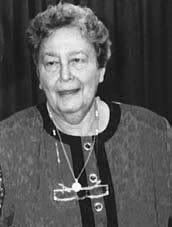Myra levine s_conservation_theory
View more presentations from Angela Betsaida Beltran.
The following is a list of the influences in the development of her philosophy of nursing and the conservation model.
1. Myra Levine credited Florence Nightingale (1859) with the importance of observation to the process of nursing. Observation is a guardian activity (Levine, 1992). Levine indicated that Nightingale provided great attention to energy conservation and recognized the need for structural integrity. Levine relates Nightingale’s discussion of social integrity to Nightingale’s concern for sanitation, which she says implies an interaction between the person and the environment.
2. Irene Beland was Myra’s teacher and thesis advisor. Beland influenced her thinking about nursing as acompassionate art and rigid intellectual pursuit (Levine, 1988b). Levine also credited Beland (1971) for the theory of specific causation and multiple factors.
3. Feynman (1965) provided support for Myra’s position that conservation was a natural law, arguing that the development of theory cannot deny the importance of natural law (Levine, 1973).
4. Bernard (1957) is recognized for his contribution in the identification of the interdependence of bodily functions (Levine, 1973).
5. Levine (1973) emphasized the dynamic nature of the internal milieu, using Waddington’s (1968) term “homeophoresis.”
6. Use of Bates’s (1967) formulation of the external environment as having three levels of factors—perceptual, operational, and conceptual—challenging the integrity of the individual, helped to emphasize the complexity of the environment.
7. The description of illness is based on Wolf’s (1961) description of disease as adaptation to noxious environmental forces.
8. Selye’s (1956) definition of “stress” is included in Levine’s (1989c, p. 30) description of her organismic stress response as “being recorded over time and influenced by the accumulated experience of the individual.”
9. The perceptual organismic response incorporates Gibson’s (1966) work on perception as a mediator of behavior. His identification of the five perceptual systems, including hearing, sight, touch, taste, and smell, contributed to the development of the perceptual response.
10. The notion that individuals seek to defend their personhood is grounded in Goldstein’s (1963) explanation of the soldiers who, despite brain injury, sought to cling to some semblance of self-awareness.
11. Dubos’s (1965) discussion of the adaptability of the organism helped support Levine’s explanation
that adaptation occurs within a range of responses.
12. Levine’s personal experiences influenced her thinking in several ways. When hospitalized, “the experience of wholeness is universally acknowledged."
1. Myra Levine credited Florence Nightingale (1859) with the importance of observation to the process of nursing. Observation is a guardian activity (Levine, 1992). Levine indicated that Nightingale provided great attention to energy conservation and recognized the need for structural integrity. Levine relates Nightingale’s discussion of social integrity to Nightingale’s concern for sanitation, which she says implies an interaction between the person and the environment.
2. Irene Beland was Myra’s teacher and thesis advisor. Beland influenced her thinking about nursing as acompassionate art and rigid intellectual pursuit (Levine, 1988b). Levine also credited Beland (1971) for the theory of specific causation and multiple factors.
3. Feynman (1965) provided support for Myra’s position that conservation was a natural law, arguing that the development of theory cannot deny the importance of natural law (Levine, 1973).
4. Bernard (1957) is recognized for his contribution in the identification of the interdependence of bodily functions (Levine, 1973).
5. Levine (1973) emphasized the dynamic nature of the internal milieu, using Waddington’s (1968) term “homeophoresis.”
6. Use of Bates’s (1967) formulation of the external environment as having three levels of factors—perceptual, operational, and conceptual—challenging the integrity of the individual, helped to emphasize the complexity of the environment.
7. The description of illness is based on Wolf’s (1961) description of disease as adaptation to noxious environmental forces.
8. Selye’s (1956) definition of “stress” is included in Levine’s (1989c, p. 30) description of her organismic stress response as “being recorded over time and influenced by the accumulated experience of the individual.”
9. The perceptual organismic response incorporates Gibson’s (1966) work on perception as a mediator of behavior. His identification of the five perceptual systems, including hearing, sight, touch, taste, and smell, contributed to the development of the perceptual response.
10. The notion that individuals seek to defend their personhood is grounded in Goldstein’s (1963) explanation of the soldiers who, despite brain injury, sought to cling to some semblance of self-awareness.
11. Dubos’s (1965) discussion of the adaptability of the organism helped support Levine’s explanation
that adaptation occurs within a range of responses.
12. Levine’s personal experiences influenced her thinking in several ways. When hospitalized, “the experience of wholeness is universally acknowledged."
She authored 77 published articles which included “An Introduction to Clinical Nursing” with multiple publication years on 1969, 1973 & 1989 that is why she receive the award. Levine told others that she did not set out to develop a “nursing theory” but had wanted to find a way to teach the major concepts in medical-surgical nursing and attempt to teach associate degree students a new approach for daily nursing activities. Levine also wished to move away from nursing education practices that were strongly procedurally oriented and refocus on active problem solving and individualized patient care.









